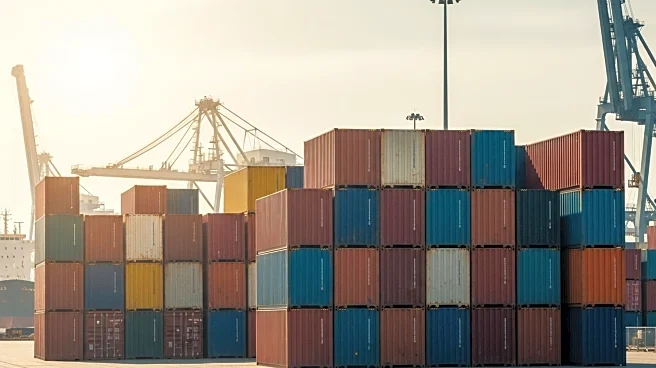What's Happening?
New tariffs on furniture and wood products have been implemented, potentially increasing the cost of building homes. According to ABC News, these tariffs are expected to affect the homebuilding industry significantly, as they will raise the prices of essential materials used in construction. The tariffs were enacted on Tuesday, and industry experts are already predicting a rise in costs for builders and consumers alike. This development comes amid ongoing trade tensions and economic adjustments, which have seen various sectors impacted by similar measures.
Why It's Important?
The introduction of these tariffs is crucial for the homebuilding industry, as it directly influences the cost of construction materials. Higher costs could lead to increased prices for new homes, affecting affordability for potential buyers. This change may also impact the overall housing market, potentially slowing down new construction projects and affecting related industries such as real estate and home improvement. Builders and consumers may face financial challenges, and the broader economic implications could include reduced housing availability and increased pressure on the rental market.
What's Next?
As the tariffs take effect, stakeholders in the homebuilding industry will likely seek ways to mitigate the increased costs. Builders may explore alternative materials or negotiate with suppliers to manage expenses. Additionally, there could be lobbying efforts to reconsider or adjust the tariffs, especially if they lead to significant disruptions in the housing market. Policymakers and industry leaders will need to monitor the situation closely to address any adverse effects on the economy and housing affordability.
Beyond the Headlines
The tariffs on furniture and lumber may also have long-term implications for international trade relations and domestic manufacturing. By increasing costs, these measures could encourage more local production of building materials, potentially boosting domestic industries. However, this shift might take time and require substantial investment. The environmental impact of sourcing materials locally versus importing them could also become a point of discussion, as stakeholders evaluate the sustainability of different supply chains.











